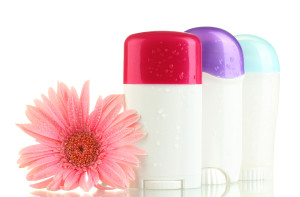Sweet Smells, Stink Results – The Truth About Your Deodorant
 My husband and I spent the last three weeks in Monrovia, Liberia where we were born. Monrovia hoovers above the equator and boy was it hot! There were many days when I took three showers, so needless to say I sweated a lot and a good deodorant was essential! Unfortunately many deodorants and antiperspirants contain toxic chemicals that disrupt our hormonal systems, weaken our immune systems and contribute to chronic diseases such as breast cancer, Alzheimer’s and autoimmune diseases.
My husband and I spent the last three weeks in Monrovia, Liberia where we were born. Monrovia hoovers above the equator and boy was it hot! There were many days when I took three showers, so needless to say I sweated a lot and a good deodorant was essential! Unfortunately many deodorants and antiperspirants contain toxic chemicals that disrupt our hormonal systems, weaken our immune systems and contribute to chronic diseases such as breast cancer, Alzheimer’s and autoimmune diseases.
It only takes 26 seconds for the chemicals in body products to be absorbed into our skin, our largest organ, and the skin under our arms is even more sensitive as it is near our lymph nodes. There are five common ingredients in deodorant and antiperspirant that you want to avoid and I have listed them below.
First, I must mention that most deodorants aren’t actually just deodorants – they’re antiperspirants. Their name is indicative of what they do – they stop you from perspiring. Sweating or perspiring is one of the body’s natural detoxification processes. Aluminum is the active ingredient in most conventional antiperspirants that blocks sweat glands and keeps sweat from getting to the skin’s surface. It has been linked to breast cancer and Alzheimer’s. Heavy metals such as aluminum and mercury have also been linked to autoimmune diseases. You want to choose a deodorant that contains corn starch or another natural ingredient that absorbs your sweat instead of stopping you from sweating.
Parabens are a common ingredient in body products, including deodorants and antiperspirants. They’re hormone disruptors and one study showed that 90% of cancerous breast tumors contained parabens. They’ve also been linked to early puberty and birth defects. There are many forms of parabens, so watch out for anything that ends in the word “parabens.”
We often associate fragrance with something that is clean, however “fragrance” in body products and other personal care products is actually a mixture of several dozen to several hundred chemicals, many of which are toxic. Exposure to “fragrance” has been linked to allergies, asthma and migraines. You want to choose a deodorant that uses essential oils instead of “fragrance.”
Trisclosan is another popular ingredient found in antiperspirant and hand sanitizer. It’s used to kill bacteria and hence the odor, but has been listed as a potential carcinogen by the Environmental Protection Agency. The American Medical Association recommends that trisclosan not be used in the home because it encourages bacterial resistance to antibiotics.
Propylene Glycol is an ingredient that prevents body products from drying out and is also found in many deodorants. It was originally developed as an anti-freeze and has been linked to an increased risk of developing respiratory and immune disorders, especially in children, including allergies, asthma, eczema, hay fever and allergies.
There are many other ingredients in deodorants and antiperspirants that are harmful, but I’ve given you five of the most common harmful ones. The first thing that I suggest is, opting for a deodorant instead of a combination deodorant/antiperspirant. If you do this, you’ll most likely chose a product that does not contain aluminum. Secondly, you have to read the labels – the back label, that is. I know that you’ve heard this from me before, but you have to get in the habit of reading all of the labels on the products that you buy. You want to choose a product that contains ingredients that you recognize like, shea butter, essential oils, coconut oil, corn starch, probiotics, etc. If an ingredient has a long scientific name, it’s most likely a chemical. That’s my mantra, plain and simple – choose products, whether it’s food or body products, with ingredients that you can read!
Now that you’ve learned about some of the toxic ingredients in deodorant and antiperspirant, I want you to do a couple of things. First go and grab your deodorant/antiperspirant and read the label. Do you use a true deodorant or a combination deodorant/antiperspirant? Are any of the chemicals listed above in it? Are there any additional long scientific sounding ingredients in them? Let me know in the comments below.
I’ll be honest with you, switching to a natural deodorant means that you’ll probably have to touch up your application once or twice a day, but I would rather do that than put toxic chemicals on my skin. What about you?
– AmiCietta…






